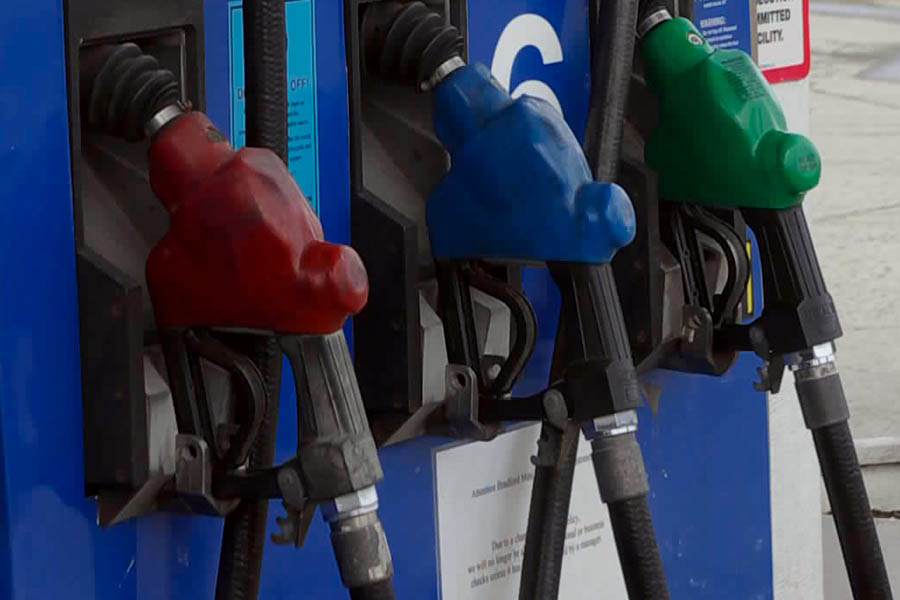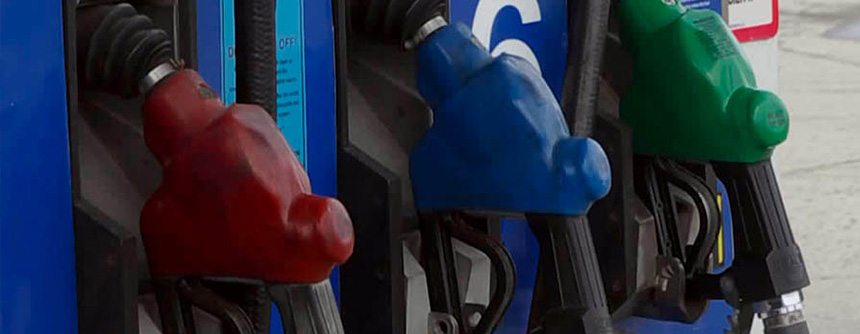Where and how to fuel up: Gauging your responsibility and options.
As boaters in Southwest Florida, we need to keep in mind the challenges and hazards of fueling our vessels. Bigger boats often have quite large fuel tanks—much larger than cars—meaning where there’s more fuel, there’s more to cause problems if you’re not careful. Dock-based gas nozzles often pump fuel faster than those at automobile service stations. And, gasoline fumes are extremely flammable. In fact, most fires and/or explosions on boats happen during (or immediately after) fueling—so please take as much care as possible when at the pump.

ENVIRONMENT
We also need to be sure to keep the marine environment clean by making certain fuel goes only in your tank and not into the water. Without proper care, fuel can drip off the end of the nozzle, splash out of the tank, or discharge from the vent when overfilled or due to expansion. All these seemingly small sources can add up to a big problem— threatening the enjoyment of recreational boating for everyone. It takes only a small amount of spilled fuel to cause a film over a large area of water. And even after the film is gone, the presence of fuel in the water continues to threaten the environment. It can kill fish and other marine life and cause long-term damage to their natural habitat. If you do experience a spill, regardless of the amount, be sure to report it to the U.S. Coast Guard National Response Center. It’s important to perform a quick clean up — and it’s the law. To report spills, call 1-800-424-8802 or 202-267-2675. The Center is staffed 24/7.
AMOUNT
Whatever your destination, plan to have enough fuel on hand. A good best practice is the one-third rule: one-third to go out, one -third to come back, and one-third on hand for emergencies and dealing with adverse conditions—winds, or weather.
SAFETY
As is often the case with boating, thinking ahead can avoid fires and keep you out of trouble. Follow these rules to avoid spillage and accidents when fueling your vessel:
- If you are filling cans or portable fuel tanks, take them out of the boat and refuel them onshore or out of your truck bed and place them on the ground outside the vehicle. This is safer as it will stop dangerous fumes from building up on your deck and around your boat.
- Before fueling inboard tanks, close all hatches and other openings to prevent fumes from getting into interior spaces of the boat.
- To avoid air locks and sudden spills, be sure your boat is level when refueling. Put passengers ashore or level your trailer if refueling at a service station.
- Be sure you have a fire extinguisher within reach when filling up. Extinguish cigarettes and any other smoking materials or flame. Turn off engines, all electrical equipment, including radios, stoves, and other appliances.
- Never use a cell phone when fueling. Static electricity can create a spark. Turn cell phones completely off.
- Do not rely on hands-free or automatic shut-off features. Attend the nozzle at all times, and never fill your fuel tank to the top. Fuel will expand as it warms up, especially in warm weather, so be sure to allow room in your tanks for this expansion to avoid leaking fuel into the water. Let’s keep our marine environment clean.
- If you have a metal fuel tank, maintain nozzle contact with the fill pipe to prevent static spark and spills. Hold an absorbent sheet under the nozzle to catch any drips, and be sure to wipe up any spillage that should occur. After fueling, be sure to secure the filler cap to prevent fuel from leaking or water from entering the tank.
- Before starting the engine, run the blower for at least four minutes and check the bilge for any fuel vapors. Open all ports, hatches, and doors to ventilate. Do the “sniff” test. Make sure there is no gasoline odor anywhere on the boat. If there is, don’t start the engine. Instead, continue ventilating and checking for possible leaks.
EFFICIENCY
How well you maintain and operate your vessel can have a huge impact on fuel economy. To make the most of what’s in your tank, consider these tips:
- Chart your trip to reduce unnecessary run time. Use the tides and wind to your advantage. Boating against the tides and wind takes more horsepower and fuel.
- Be sure to keep your load light and well-balanced to reduce the horsepower required to propel it through the water. Travel at steady, moderate speeds to reduce fuel consumption.
- Keep your boat well maintained: Be sure your engine is tuned. Clean spark plugs and proper timing will improve mileage. Keep your hull clean.
- Perform regular hull maintenance to prevent hard marine growth that creates a rough hull and adds to underwater drag.
- Check your propeller. Are the blades clean and in good condition? A damaged propeller provides inefficient propulsion and burns extra fuel.
- Prevent stale gas by running the tank to empty before any long periods of inactivity, and always store portable fuel tanks in a cool dry place to minimize condensation.
ETHANOL-FREE
Although ethanol fuel is widely used because it is less costly up front, there are three main problems with using it in your boat: phase separation, deterioration of fuel system components, and the overall cost of keeping your boat operational. For complete information on this subject, visit our previously-posted blog here.
So there you have it…a quick guide to fueling safely, responsibly and wisely. This site has a map of several on-water fueling spots for you to reference. Be safe and enjoy your days on the water!

